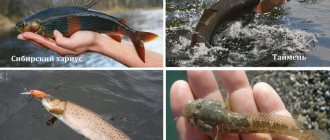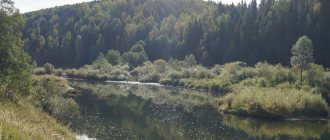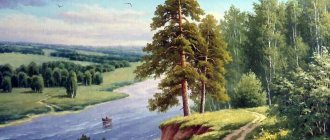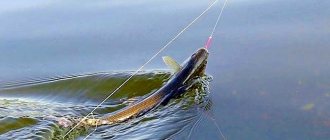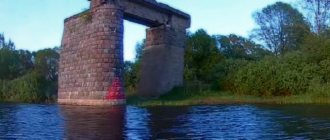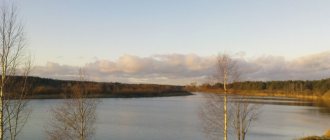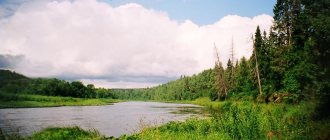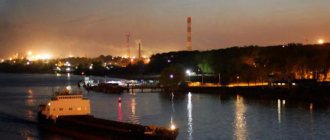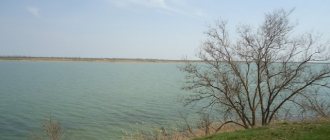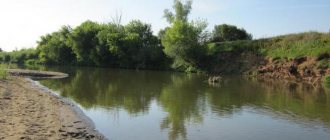Transbaikalia is a vast region located in the southeast of Eastern Siberia. It includes the Trans-Baikal Territory, part of Buryatia and part of the Irkutsk region. The area of the region exceeds 400 thousand square meters. km, which is significantly larger than the area of most states on our planet. Despite the harsh, sharply continental climate and very cold winters with average temperatures down to -33°C, the nature of the region abounds with a large amount of living creatures, in particular fish. Rivers in Transbaikalia belong to the basins of Baikal, Lena and Amur. They abound in fish, so fishing in Transbaikalia promises to be very interesting.
general characteristics
In Transbaikalia there are a huge number of large and small rivers where you can very effectively catch a wide variety of fish. However, the region as a whole is characterized by one serious problem - due to underdeveloped infrastructure, not all reservoirs can be easily reached.
One of the most effective vehicles that can solve this problem is a boat with a motor, however, in the summer, when the water level is low in almost all bodies of water, the boat is not able to pass everywhere. On the other hand, there are a sufficient number of deep rivers, any point of which can be reached without problems with this craft.
The most productive time for fishing in Transbaikalia is autumn. At this time of year, fish, preparing for the cold winter, are very willing to go to artificial baits. Therefore, at this time there is a real paradise for anglers using spinning rods.
Fish in Transbaikalia have significant differences in species composition from fish not only in the rivers of Europe, but also in Western Siberia. Species such as taimen, lenok and grayling predominate in local reservoirs. However, one should not think that there are no fish here at all, characteristic of the middle zone; In the reservoirs of Transbaikalia you can find pike, perch, carp and burbot.
Among the characteristic “local” fish, the most interesting prey is taimen. This strong fish is an uncompromising predator, nicknamed the “Amur shark”.
Its weight can reach 70 kg, and its dimensions can reach up to 2 m. Taimen are caught using a spinning rod using various spoons or artificial “mouse” baits, which got their name because of the appearance of this rodent swimming on the surface of the water. Taimen usually hides in ambush behind some large obstacle, from where it attacks its potential victim.
Not all fishermen are able to catch taimen. Taimen has such a powerful grip that in the first moments of fishing it, it is absolutely impossible to reel in the fishing line - the clutch only gives it away. Naturally, fish of this class require extra-heavy class rods.
Another interesting fish of Transbaikalia is lenok. Lenka is much smaller than taimen; The maximum recorded weight of the caught fish is about 8 kg with a length of about 70 cm.
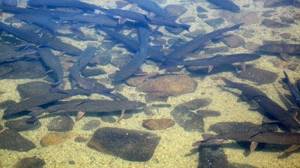
Lenok moves mainly in small flocks, although it hunts in approximately the same way as taimen - attacking alone from an ambush.
Grayling fishing is no less popular in Transbaikalia.
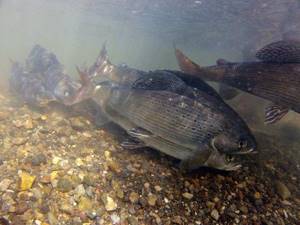
Grayling is a relatively small fish that rarely weighs more than 6 kg, and its length does not exceed 50 cm.
Grayling is also caught mainly with spinning rods, but fishing rods are also often used. In this case, small baits such as flies or streamers are used; the advantage of the latter is that it can be used to fish both fly fishing and using a spinning rod.
In spring, most fish travel along deep rivers to spawn in the upper reaches. This movement is carried out in large schools, while the fish continue to actively and feed a lot, and, naturally, are also excellently caught.
In the summer, when the water level drops significantly and the fish return from spawning grounds to their usual habitats, the bite is significantly worse. However, the short period of summer quickly gives way to autumn and the intensity of the bite returns to the state familiar to fishermen.
But one should not think that fishing in this region freezes in winter. Despite the harsh winters, active fishing is carried out in Transbaikalia and from under the ice. Despite severe frost and a thick layer of ice (sometimes reaching up to 1 m), there is no fish kill in winter, since the flow in the rivers remains constant. It is in winter that a significant share of the catch of pike, burbot, dace, grayling and perch occurs.
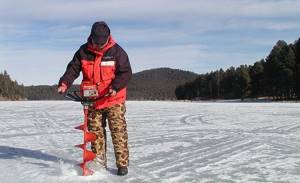
Fishing in Transbaikalia, especially in winter, requires a very serious level of training and technical support. For example, for winter fishing, the presence of a motor drill or chainsaw is often mandatory.
Forbidden tools and methods of fishing in the Trans-Baikal Territory
On the territory of the Trans-Baikal Territory it is prohibited:
- use small vessels and pleasure craft during the prohibited period on prohibited water bodies;
- have production (catch) gear, the use of which is prohibited in a given area and at a given period of time, as well as aquatic biological resources, the extraction (catch) of which is prohibited in a given area and at a given period of time, or their fragments (parts)
install:
- mining (fishing) gear covering more than 2/3 of the width of the river bed, stream or channel, and the deepest part of the bed must remain free. It is also prohibited to simultaneously or alternately sweep seines from opposite banks of the watercourse “into the castle”;
- fixed mining (catch) gear in a checkerboard pattern at a distance between them of less than 50 m;
It is prohibited to use:
- networks of all types;
- fixed and cast nets;
- traps of all types (merezh, venterey, ryuzh, secrets, versh, surp, fitel, korchag, “muzzle”, “hapov”, “trough”, “krivd”, “kotsov”, etc.);
- fishing rods and spinning rods of all systems and names, as well as hooks with a total number of hooks (single, double or treble, hereinafter referred to as hooks) of more than 10 pieces on the citizen’s fishing gear;
- bormash fishing rod using bormash (mormysh, amphipods, gammarids) as bait and lure with a total number of hooks of more than 5 pieces on the citizen’s fishing gear;
- lines with more than 10 hooks on a citizen’s fishing gear;
- circles and girders with a total number of hooks of more than 10 pieces on the citizen’s fishing gear;
- “ships”, “tyrants” with a total number of hooks of more than 5 pieces on the citizen’s fishing gear;
- dragnets, seines, drag nets, trawling and dredging mining (catch) gear;
- “capes”, “TVs”, “screens”, “kerchiefs”;
- lifters (“spiders”), scoops or other straining devices measuring more than 100 x 100 cm and with a mesh size (pitch) of more than 10 mm;
- loops, pike traps and other exciting fishing tools;
- self-catching non-bait hook gear;
- piercing fishing tools (including stockade), with the exception of amateur and sport fishing carried out using special pistols and guns for underwater hunting;
- firearms and pneumatic weapons;
It is prohibited to carry out production (catch):
- by the method of purpleing, jamming, rutting (including with the help of rattling and bogging);
- “for illumination” from ships and floating craft, as well as the ice cover of a water body of fishery importance - using lighting devices and lanterns of various designs from the surface and in the water column in the dark (astronomical, from sunset to sunrise) for production (catch ) aquatic biological resources, with the exception of underwater hunting, fishing using fishing rods (including bottom fishing rods) and spinning gear of all systems and names, as well as crayfish traps;
- by installing driveways, fences, dams, partially or completely blocking the watercourse and preventing the free movement of fish;
- on the track (using a sail and human muscle power) using more than two artificial baits per vessel;
- trolling (using a motor) using more than two artificial baits per vessel;
- through the release of water from water bodies of fishery importance.
Important. In amateur and sport fishing, the use of nets for fishing (catching) from fishing line (monofilament) is prohibited.
List of places where movement on motor boats is prohibited
The fishing rules in the Trans-Baikal Territory introduce restrictions on the use of small and pleasure boats during the prohibited period.
List of water bodies where the use of small vessels is prohibited
Subject of the Russian Federation
| A water body of fishery significance (or a section thereof) adjacent to the border of a certain subject of the Russian Federation or located on its territory | Ban period | |
| Transbaikal region | In all water bodies of fishery importance. | from May 1 to June 30 |
| In the rivers Chara, Vitim, Olekma. In lakes Bolshoye Leprindo, Maloe Leprindo, Nichatka and Lake Amudisy of the China River basin. | from September 1 until the freeze-up period |
Fishing in rivers
Let's look at the most interesting places for fishing on the rivers of Transbaikalia. Despite the fact that almost all the rivers of Transbaikalia have a rapid current and cold water, there are enough places in them where the current is weak or practically absent. This picture creates the necessary conditions for the life of fish of a wide variety of types.
Onon watershed
The length of the Onon River in Transbaikalia is about 550 km. This is a typical mountain-steppe river with a fast flow. During a flood, it floods all low places and a large number of fish can enter the flooded areas. Large catfish and carp are frequent guests in the Onon floods.
Many other rivers flow into Onon: Kurulga, Unda, Tyren, etc. All of them are spawning grounds for the fish population of Onon. Along its entire length, Onon is replete with a large number of channels, bays, and oxbow lakes, in which fish are constantly found.
Among the inhabitants of Onon you can find the following fish:
- sturgeon;
- taimen;
- lenok;
- carp;
- pike;
- grayling.
Beluga whales sometimes come from Shilka to Onon.
Fishing on the lakes of Transbaikalia
Separately, we should talk about the lakes of Transbaikalia. Their number is huge and describing even the main ones can take a lot of time, so the lakes will be presented in geographical groups.
Steppe lakes
Located in the south of the region. First of all, it should be noted that the largest are Barun-Torey and Zun-Torey, with an area of 600 and 260 square meters. km respectively. Despite the fact that their area significantly depends on the amount of precipitation, they contain a large number of different fish: pike, spiked fish, taimen, perch, goby, burbot, etc.
Lake Kenon
An interesting body of water, convenient primarily because it is located on the outskirts of the city of Chita (which is home to a third of the residents of the Trans-Baikal Territory), which greatly simplifies the ability to get to it. Naturally, such a reservoir is very popular.
The area of Kenon is almost 1500 hectares, the nature of the bottom is sand and pebble. One of the interesting inhabitants of Kenon is the golden crucian carp - a large (up to 3 kg) fish whose taste is practically no different from river carp. In addition to this, the lake contains:
- perch;
- chebak;
- catfish;
- pike;
- White amur.
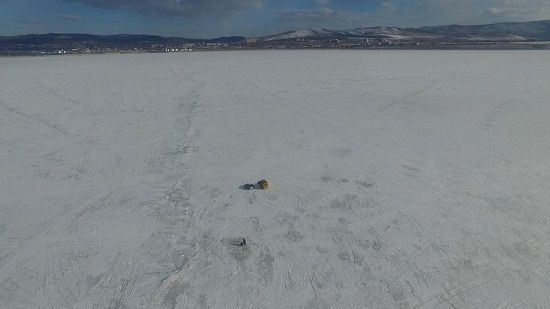
In winter, the lake is covered with ice, and the freeze-up lasts from 6 to 7 months, which makes it possible to engage in winter fishing.
Northern lakes
As the name suggests, they are located in the north of the region. Most of them are located in the remote taiga, and getting to them is not easy. The most famous are Arey, Tanga and Nikolaevskoye. On the shore of the first, located a few kilometers from the village of Salia, there is even some semblance of a tourist town, since its water is considered healing.
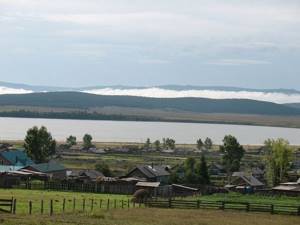
Tanga and Nikolaevskoye are located near settlements with similar names. These are fairly deep lakes with clean and transparent water.
In all three lakes there are golden crucian carp, pike, and chebak.
Beklemishevskie lakes
This group of lakes also has another name: Ivano-Arakhleiskaya. They are located near the Yablonovy Ridge, located approximately 80 km from Chita. There are quite a lot of lakes here:
- Ivan;
- Tasey;
- Arakhlei;
- Shaksha;
- Big and Small Undugun;
- Irgen;
- Kirandinka.
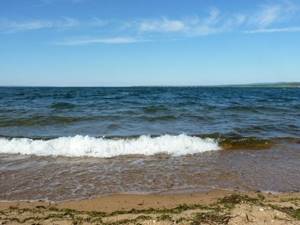
All lakes have cold and very clean water. Their main feature is that they contain not only fish typical for the region, but also species that are not found in the rivers of Transbaikalia.
On the Beklemishevsky lakes there are:
- perch;
- pike;
- crucian carp;
- bulus;
- chebak;
- Baikal ide;
- Amur catfish;
- carp;
- chir;
- peled;
- and many others.
There is a good road to the lakes and the number of fishermen coming here is increasing every year.
Gazimur Lakes
These reservoirs are located in the Nerchinsky Range. These include the following lakes:
- Kudikanskoe;
- Ubienskoye;
- Round;
- Herbaceous;
- Kadymskoe;
- and etc.
The lakes have shores abundantly covered with forest vegetation. Despite this, the approaches to the lakes are good. Mostly large crucian carp are caught on the Gazimur lakes.
Prohibited periods and places for fishing in the Trans-Baikal Territory
Forbidden places
Fishing rules in the Trans-Baikal Territory prohibit the extraction (catch) of aquatic biological resources during the year (with the exception of the Irkutsk and Boguchansky reservoirs, the Barguzin Bay of Lake Baikal, as well as the rivers of the Angara River basin):
- in the delta of the Selenga River, including part of the said river, its channels (including the Lobanovskaya, Severnaya, Kolpinka, Kolpinaya and Srednye estuary channels), branches, as well as oxbow lakes and the coastal zone of Lake Baikal, in an area limited: from the south and west - a straight baseline connecting points with coordinates: 52°14′ N. — 106°31′ E (Kondakovsky Island) and 52°21′ N. — 106°20′ E (water area of Lake Baikal);
- from the east - a straight baseline connecting points with coordinates: 52°14′ N. — 106°31′ E (Kondakovsky Island) and 52°23′ N. — 106°40′ E (water area of Lake Baikal);
- from the north - a line equidistant at a distance of 1.5 km from the coastline of Lake Baikal, connecting the above points with coordinates: 52°21′ N. — 106°20′ E and 52°23′ N — 106°40′ E;
- in the Chivyrkuisky Bay of Lake Baikal in areas limited by: a straight starting line passing through the most distant points of the Goryachinsky (Zmeevy), Ongokonsky, Fertik capes towards the bay, and a line running along the coastline of the lake and connecting the indicated points of the Fertik and Goryachinsky (Zmeevy) capes );
- a straight starting line connecting the point of Cape Bezymianny that is most distant towards the bay with the northern tip of Baklaniy Island, then a line running along the coastline of the eastern part of Baklaniy Island to its southern end, then a straight line to the point of Cape Irkana that is most remote towards the bay and then a line , running along the coastline to the specified point of Cape Bezymyanny;
- a straight starting line connecting the most distant point of Cape Kurbulik towards the bay with the southern tip of the Maly Kyltygei (Goly) island, then a line running along the coastline of the western part of the Maly Kyltygei (Goly) island to its northern tip, then straight lines sequentially connecting the most points of capes Ongokonsky and Kurbulik, remote towards the bay;
- in the Barguzin Bay of Lake Baikal from Cape Cherny to Cape Bilyutinsky in a coastal zone 5 km wide, measured from the coastline;
- in the Angara River below the dams of the Irkutsk, Bratsk and Ust-Ilimsk hydroelectric power stations for 3 km along the entire width of the Angara River;
- in lakes Davatchan, Leprindokan, Bolshoy Namarakit, Kulinda, Verkhnekicherskoe;
- in the Irkutsk reservoir;
- in the rivers of the Angara River basin;
- in the Bolshaya Yangoza and Agul rivers.
Prohibited fishing periods
The fishing rules on the territory of the Trans-Baikal Territory prohibit the fishing of fish and other aquatic biological resources (except for the use of fishing rods of all systems and names, no more than one fishing rod per citizen with the number of hooks (single, double or tee) no more than 2 pieces from the shore without the use of floating devices, as well as from the ice cover of a water body of fishery importance) during prohibited periods:
all types of aquatic biological resources:
- in the basins of the Kichera and Upper Angara rivers, Lake Irkana and the Angarsky Sor Bay of Lake Baikal - from May 1 to June 30;
- in the North Baikal fishing area of Lake Baikal - from August 20 to November 15, in the Upper Angara River - from September 10 to November 15, in the Kichera River - from September 20 to November 15, including their tributaries and channels;
- in lakes Arangatui and Small Arangatui and the Arangatuisky source channel, connecting Lake Small Arangatui with the Chivyrkuisky Bay, as well as at distances of less than 3 km, measured to the right, left and deep into the Chivyrkuisky Gulf from the mouth of the Arangatuisky source channel <1> - from the melting of ice to June 20 and from August 10 to November 10;
- in the Bolshoi Chivyrkui and Bezymyannaya rivers, as well as at distances less than 3 km measured to the right, left and deep into the Chivyrkuisky Bay from the mouth of the Bolshoi Chivyrkui River - from August 10 to November 10; in the Chivyrkuisky Bay of Lake Baikal and the rivers flowing into it - from the melting of ice to June 20;
- in the coastal zone 2 km wide around Baklaniy Island, located in the Chivyrkuisky Bay of Lake Baikal, measured from the coastline of the island, from the period of freeze-up until the melting of the ice;
- in the Barguzin River basin, as well as at distances of less than 3 km, measured to the right, left and deep into the Barguzin Bay of Lake Baikal from the mouth of the Barguzin River - from the melting of the ice to July 5 (except for the catch of carp (residential form)) and from August 15 to October 31;
- in Lake Dukhovoe - from May 10 to July 5;
- in the bays of Sor (Posolsky Sor) and Sor-Cherkalovo (Istoksky Sor) of Lake Baikal and the rivers flowing into them; in the Selenga River, as well as lakes and channels located in its delta - from April 25 to June 30;
- in the Proval Bay of Lake Baikal and in its coastal zone 1 km wide, measured from the coastline running from the most distant point towards the lake, Cape Oblom, to abeam a point located at a distance of 4 km towards the village of Enkheluk - from April 25 to October 31;
- from August 1 to October 15 - on a section of Lake Baikal, limited: from the south - by a straight starting line connecting the point of Cape Goloustny that is most distant towards the lake and the mouth of the Boyarskaya River (near the village of Boyarsky);
- from the north - a straight starting line connecting the points of capes Oblom and Aya that are most distant towards the lake;
- from the west - a line running along the shoreline of the lake connecting the indicated points of capes Goloustny and Aya;
- from the east - a line running along the shoreline of the lake, connecting the mouth of the Boyarskaya River with the indicated point of Cape Oblom;
- in the bays of Sor (Posolsky Sor) and Sor-Cherkalovo (Istoksky Sor) of Lake Baikal, in the Selenga River - from August 15 to November 15;
- from April 25 to June 30 - in the following areas of the Maloe More and Olkhon Gates of Lake Baikal: in Mukhur Bay in an area limited: from the north - by a straight starting line connecting the most distant points towards the bay of capes Antukhay (Ontkhoy) and Ulan; from the south - a line connecting the indicated points and passing along the coastline of the bay;
- in Kurkutskaya Bay in an area limited: from the east - by a straight starting line connecting the points of capes Shibete and Ulan that are most distant towards the Maloe More Strait; from the west - a line connecting the indicated points and passing along the coastline of the bay;
- in the bays of Bazarnaya, Second (Malaya) Kurkutskaya in an area limited: from the east - by a straight starting line connecting the points of capes Gakhte and Khargante that are most distant towards the Olkhon Gate Strait; from the west - a line connecting the indicated points and passing along the coastline of the bay;
- in Zagli Bay in an area limited: from the west - by a straight starting line connecting the points of capes Ulyatai and Zabro (Khargante) that are most distant towards the Olkhon Gate Strait; from the east - a line connecting the indicated points and passing along the coastline of the bay;
- from September 25 to January 20 - in the section of the Maloe More straits and the Olkhon Gates of Lake Baikal, limited: from the north - by a straight starting line connecting the points of capes Hadarta (Khadartui) and Khorgoy that are most distant towards the Maloye More strait;
- from the south - a straight starting line connecting the most distant points of the Zabro (Khargante) and Yubukhan capes towards the Olkhon Gate Strait;
- from the west - a line running along the coastline of the western coast of the above-mentioned straits, connecting the indicated points of capes Hadarta (Hadartuy) and Yubukhan;
- from the east - a line running along the coastline of the western coast of Olkhon Island, connecting the indicated points of capes Khorgoy and Zabro (Khargante);
- in the lakes of the Eravno-Kharginsky system and in the Kholoy River, connecting the system of Eravno-Kharginsky lakes with the Vitim River - from May 5 to June 30;
- in Lake Gusinoye, as well as its tributaries (except for the production (catch) of freshwater perch) - from May 1 to June 30; freshwater perch - from June 1 to June 30;
- in the Bayan-Gol River, as well as in the Tsaidam and other lakes of the Bayan-Gol River floodplain - from May 1 to July 20;
- in the rivers Uda, Temnik, Dzhida and their tributaries - from April 20 to June 30;
- in the rivers Khilok, Chikoy and their tributaries - from April 20 to June 30 and from September 15 to October 31;
- in the Big and Small Amalat rivers and their tributaries - from May 1 to June 20;
- in the following water bodies of fishery importance (and their parts) of the Tsipo-Tsipikan (Bauntovskaya) system: a) in lakes Oron and Kapyluchikan (Maloe Kapylyushi) - from June 1 to July 10 and from October 1 to November 15;
- b) in the Nizhnyaya Tsipa River, in the area from the mouth (including the mouth) of the Ugolnaya (Uligli) River to the confluence with the Vitim River, as well as in the Verkhnyaya Tsipa and Tocha rivers - from September 1 to October 31;
- c) in the Oronskaya channel, connecting lakes Oron (Big Kapylyushi) and Kapyluchikan (Small Kapylyushi); Bogdanovskaya Channel, connecting Lake Busani with the Nizhnyaya Tsipa River - from May 20 to June 30 and from September 1 to October 31;
- d) in the Busanskaya and Mogoy channels, connecting Lake Busani with the Nizhnyaya Tsipa River; the Tretyakovskaya channel, connecting the Tretyakov Lakes with the Nizhnyaya Tsipa River; in lakes Gulinga, Busani and Tretyakovskiye - from May 20 to June 30;
- e) from March 10 to June 10 - in Lake Oron (Bolshoye Kapylyushi)
- e) from March 10 to June 10 - in Lake Kapyluchikan (Small Kapylyushi)
- g) from March 10 to June 10 - in Lake Dorong;
Fishermen of Transbaikalia
Fishermen of the Transbaikal region unite into fishing communities, one of the most popular is the “Union of Fishermen of Transbaikalia”. It has several thousand members and has its own groups on social networks: https://vk.com/ribakiz and https://ok.ru/rybakiz
In these communities, fishermen coordinate their activities, exchange advice, buy and sell fishing equipment, and, of course, publish their reports.
Fishing in Transbaikalia is one of the most interesting types of recreation. A huge number of reservoirs rich in fish are located in the most picturesque natural places, practically unaffected by human activity. The variety of fish species and the almost non-stop period of its activity make fishing in Transbaikalia truly unforgettable.

